CSS Forums
Tuesday, April 16, 2024
11:13 AM (GMT +5)
11:13 AM (GMT +5)
|
#1
|
||||
|
||||
|
salam to all. guys my friends have requested me to make notes of physical geo.bcoz they are having difficulty in making notes. so i am starting notes of physical geography,you can also contribute as much you can and if any one find any mistake plz inform me. me ALLAH pak se dua kerti hun k wo mujhi itne hemat de k ma ye notes time pe complete ker sakun.ameen
physical geography notes first topic THE UNIVERSE The Beginning1,2 The Solar system started with the collapse of a cloud of interstellar gas and dust. Gravity caused the cloud to fragment and condense into ball of heated gas that eventually became the Sun. Meanwhile, whirling disks around the nascent star gave birth to the planets. About 4.5672 billion years ago bits of dust around the growing Sun started sticking together to form small, inch-long clumps (reproducible in the laboratories). The next step was amalgamation of the small bits into mile-wide objects call planetesimals.  Figure illustrates the successive stages in the earlier growth of planet Earth The three illustrations below provides a reasonable conjecture on further development of the Earth 4.5 billion years ago. Figure 09-01 shows a larger planetesimal attracting the smaller ones from the surrounding dust clouds. This nondescript rock will have a more spherical shape when it reaches a diameter of 500 km. Figure 09-02 shows a half-sized Earth. It was a heavily 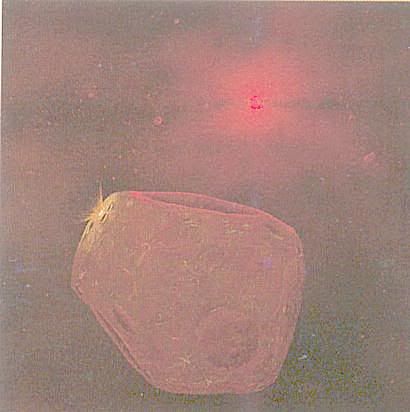 Earth embryo 4560 my ago 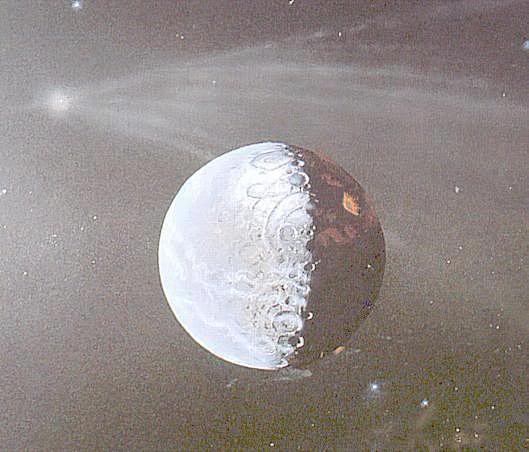 Earth,half sized,4550 my ago 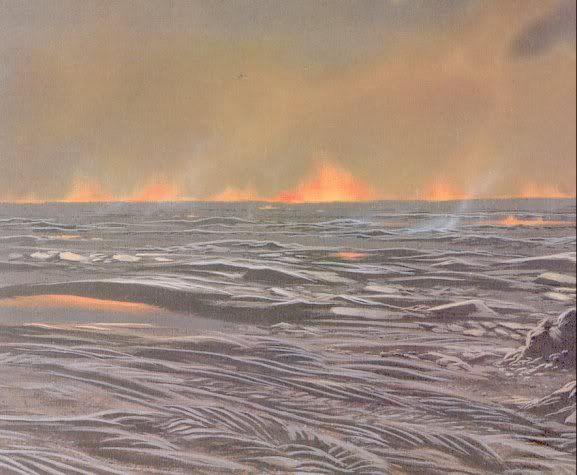 Earth,primitive,4540 my ago cratered world covered with magma produced by planetesimal impacts. The new world was beginning to acquire a thin atmosphere. The cloud patterns are more belt-like because of the faster rotation. Figure 09-03 shows a primitive 2 :-Geological and Biological Records A more reliable history for a small part of the Earth can be found in Strathcona Park, Vancouver Island, Canada; or any places where sedimentary rocks, such as clays, shales, and limestones, are exposed. Figure 09-04a depicts the sequence of rocks  stratigraphy) that occurs within the park and immediately adjacent to it, including the names and ages of the natural rock layers or strata. The bottom layer (earliest) corresponds to the Devonian Period when earliest amphibians and first forests appeared about 400 million years ago. The Strathcona Park website carries all the information about the geology of the Park and more. While the events and objects listed in Figure 09-04a are related locally within the Park, the history of the Geological Periods in Figure 09-04b is supposed to be global with events re-constructed by geologists and paleontologists. Table 09-01 depicts the geological and biological events in each of the period. 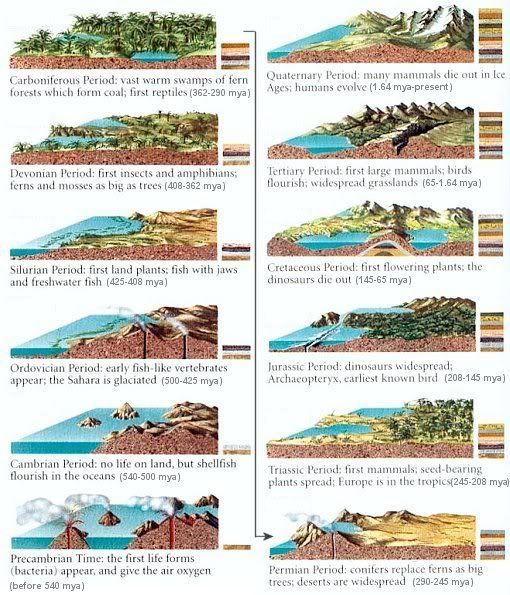 to be continued................. |
| The Following 25 Users Say Thank You to SYEDA SABAHAT For This Useful Post: | ||
12fairy (Tuesday, February 21, 2012), Abdullah khan (Friday, January 27, 2012), acbarasghar (Monday, September 05, 2011), ADORABLE22 (Saturday, May 14, 2011), ahmed470 (Wednesday, May 11, 2011), ASI FAISAL (Wednesday, May 11, 2011), azmatullah (Friday, August 05, 2011), candidguy (Wednesday, May 11, 2011), dazzling girl (Wednesday, February 29, 2012), decentguy (Wednesday, August 28, 2013), DR ZHIVAGO (Saturday, February 02, 2013), emran ali (Friday, May 11, 2012), Fahaf (Tuesday, August 26, 2014), Lonely birdx (Wednesday, April 17, 2013), Man Jaanbazam (Sunday, March 03, 2013), mehmoodahmed (Wednesday, February 29, 2012), muhammad_essa (Friday, May 13, 2011), Mukarrum (Saturday, December 17, 2011), Nazma Chaudry (Monday, October 13, 2014), Nida Sehar (Wednesday, May 11, 2011), RJ STYLE (Wednesday, October 30, 2013), Syedanjumhussain (Thursday, May 23, 2013), virgoan (Friday, October 07, 2011), yasiiqbal (Friday, February 21, 2014), Zazan khan (Thursday, August 30, 2012) | ||
|
#2
|
||||
|
||||
|
Era Period (MYA) GEOLOGICAL EVENTS BIOLOGICAL EVENTS
PRE-CAMBRIAN ERA HADEAN 4560-3800 Formation of Earth, solidification of crust, evidence of water, heavy bombardment. Prebiotic. ARCHEAN 3800-2500 Beginning of rock record, evidence of plate tectonics, magnetic field generation. Protozoa (unicellular organism). PROTEROZOIC 2500-540 Free oxygen in the atmosphere, glaciation¶, solidification of inner core. Metazoa (multicellular organism). PALAEOZOIC ERA (Era of Ancient Life) CAMBRIAN 540-500 (new timescale) Deposition of Burgess Shale. Invertebrates (trilobites), corals, sea life of many types proliferating. ORDOVICIAN 500-425 Sea covered most of the planet. Vertebrates, first fish, mass extinction§. SILURIAN 425-408 Land plants, jawed fishes, ammonoids. DEVONIAN 408-362 Amphibians, forests, sharks. CARBONIFEROUS 362-290 Swamps and coal bearing rocks. Insects, ferns. PERMIAN 290-245 Formation of Pangaea (the super-continent), desertification occurred. Reptiles, conifers. MESOZOIC ERA (Era of Middle Life, Age of Reptiles) TRIASSIC 245-208 First dinosaurs. JURASSIC 208-145 Oldest surviving ocean floor. Height of dinosaurs, early mammals and birds. CRETACEOUS 145-65 Oil and gas deposits, broke up of Pangaea, global mountain building. End of the dinosaurs, first flowering plants. CENOZOIC ERA (Era of Modern Life, Age of Mammals) TERTIARY 65-1.64 Himalayas and Alps folded. Evolutionary separation of apes and monkeys, most mammals established. QUATERNARY 1.64-present Last ice age. Modern man. Table 09-01 Geological Periods ************************************************ TOPIC NO 2:-LITHOSPHERE Internal Structures Earth's internal structure can be separated into four layers as shown in Figure 09-05a and explained in more details in the followings. Crust - The outermost part of the Earth; this is what we walk around on. It is made of cold, brittle, and relatively light material. Under the continents, the crust averages about 30-40 km thick (more under tall mountains, somewhat less in other areas) and under the ocean, it averages about 5-6 km thick. Continental crust is on average older, more silica-rich and thicker than oceanic crust, but is also more variable in each of these respects. The oldest parts of the continental crust, known as 'shields' or 'cratons', include some rocks that are nearly 4 billion years old. Most of the rest of the continental crust consists of the roots of mountain belts, formed at different stages in  Earth history. Oceanic crust underlies most of the two-thirds of the Earth's surface, which is covered by the oceans. It has a remarkably uniform composition (mostly 49% 2% SiO2 ) and thickness (mostly 7 1 km). The ocean floor is the most dynamic part of the Earth's surface. As a result, no part of the oceanic crust existing today is more than 200 million years old, which is less than 5% of the age of the Earth itself. New oceanic crust is constantly being generated by sea-floor spreading at mid-ocean ridges, while other parts of the oceanic crust are being recycled into the mantle at subduction zones. The boundary between the crust and the mantle is known as the 'Mohorovicic discontinuity', or 'moho'. The mantle material beneath the moho is not generally molten or even partially molten. The mantle only becomes partially molten in special circumstances such as in mid-ocean ridges, subduction zones or 'hotspots'. The crust is firmly attached to the uppermost part of the mantle and together they make up a rigid layer known as the 'lithosphere'. The rigid surface of the Earth is made up of 'plates' in the lithosphere, they move relative to one another and relative to the underlying part of the mantle, known as the 'asthenosphere'. The asthenosphere is also solid, but over millions of years it deforms in a manner similar to Plasticine (although it is actually many times more viscous). 2:- Mantle - Immediately below the crust is the mantle. It is made of rocky material similar to the crust, but it is very hot and not brittle. The material of the mantle acts like a solid over timescales of a second, hour, week, and up to several thousand years. Over hundreds of thousands to millions of years, however, mantle material acts as a very viscous fluid and can flow from one place to another in a process called convection. The mantle makes up about 70% of Earth's mass and about 45% of its radius. The bulk of the lower mantle is termed the mesosphere and is stronger than the asthenosphere New study in 2010 reveals that there is a relatively thin layer at the bottom of the lower mantle, which has perovskite (MgSiO3) as its main composition. This thin layer underwent a phase transition to another crystal form at the specific temperature and pressure prevalent in that location (Figure 09-05b). According to computer simulations, it makes the mantle more dynamic and carries heat more efficiently than previously thought and thus explains the fast growth rate of the continents in the last 2 billion years. It may also be responsible for the hot spot in Hawaii, the evolution of the Earth's magnetic field, and the periodic precession of the Earth's axis of rotation 3:-Outer Core - Next is the outer core, which is made of very different material from the crust and mantle. The outer core is mostly iron, and is very hot. The iron mix which makes up the outer core is a fluid which moves around significantly in the course of only a few years. The fluid motions of the outer core generate Earth's magnetic field. 4:-Inner Core - Finally, there is the innermost part of the Earth, called the inner core. The inner core is mostly iron, similar to the outer core, but because the pressure is so much higher near the center of the Earth, the inner core is solidified. There is some evidence that the inner core may be spinning at a faster rate than the rest of the planet. http:// 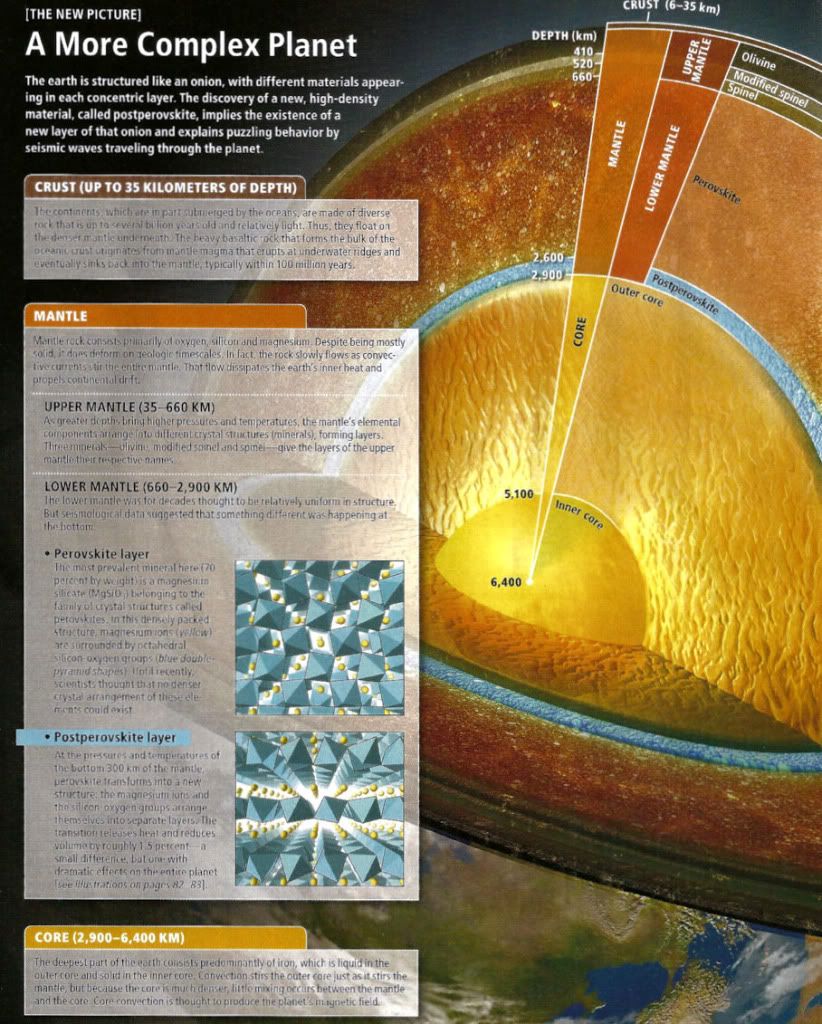 guys ye last diagarme me written portion visible nhi ha per ye aur zoom nhi ho skta to plz isi me sa perhne ki kosish kejea ga. apni duaon me mujhi yaad rakhea ga.regards sabahat
__________________
GEO to aise k sab tumhara ha,MARO to aisa jaise tmhara kuch bhi nhi. Maza deti han zindagi ki thokerin unko,jinhen NAAM-E-KHUDA le kar sanbhal janey ki adat ho. |
| The Following 11 Users Say Thank You to SYEDA SABAHAT For This Useful Post: | ||
adnanaqeel99 (Monday, December 30, 2013), ADORABLE22 (Saturday, May 14, 2011), anum.idrees (Saturday, March 21, 2015), azmatullah (Friday, August 05, 2011), candidguy (Thursday, May 12, 2011), H. R. Akhunzada (Wednesday, November 20, 2013), Lonely birdx (Wednesday, April 17, 2013), mastspidy (Wednesday, November 16, 2011), muhammad_essa (Friday, May 13, 2011), nadiamughal (Thursday, October 06, 2011), Nazma Chaudry (Monday, October 13, 2014) | ||
|
#3
|
||||
|
||||
|
ROCKS ORIGIN
In the beginning of the universe, there were no minerals and rocks (aggregate of minerals). It is through the cycles of condensation, melting, dissolving (in liquid), and precipitation that the individual atoms come together to form small crystals and then minerals. The processes work because different substance condensate or precipitate at different temperature, but they do not cleanly segregate one type of mineral from the others. That's why it is so valuable to have mineral of relatively pure compound weighed a few carat (called gemstone, 1 carat = 0.2 gm EVOULTION OF MINERALS Rocks are aggregates of minerals - usually several, but sometimes only one or two. Minerals are either free, uncombined native elements (such as gold, silver, and copper), or elemental compounds (such as silicates - metallic elements combine with the Si-O tetrahedral radical). Gemstones are minerals suitable for use in jewelry after cutting and polishing. 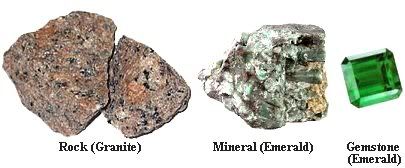 Since the Earth's crust composed mainly of Oxygen (46.6%) and Silicon (27.7%) for a total of 75%, the predominant compositions in minerals and thus in rocks are compounds such as quartz (SiO2), feldspars (XAl1-2Si3-2O8 where X can be either the elements Na, K, or Ca), and Mica (...Si3O10...) (see Figure 09-06m). There are three types of rocks according to the formation process (see Figure 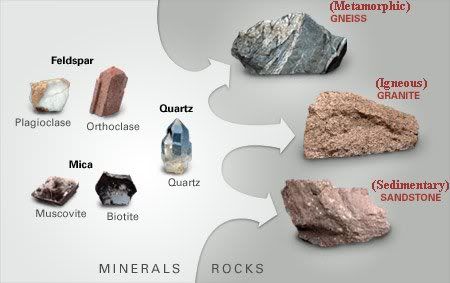 Type ,Formation, Characteristic, Composition ,Examples Igneous Solidified from molten magma either at the Earth's surface (extrusive) or underneath (intrusive). The crystals can be very large (via slow cooling), and mostly have random distribution Basalt, Granite Metamorphic Created when existing rock is chemically or physically modified by intense heat or pressure, e.g., in collision of crustal plates Have either wavy foliation (layer) or more random arrangement Gneiss, Schist Sedimentary Formed from erosion, transportation and subsequent deposition of pre-existing rocks or other kinds of sediments May occur in layers, grains may be poorly held together Shale, Sandstone 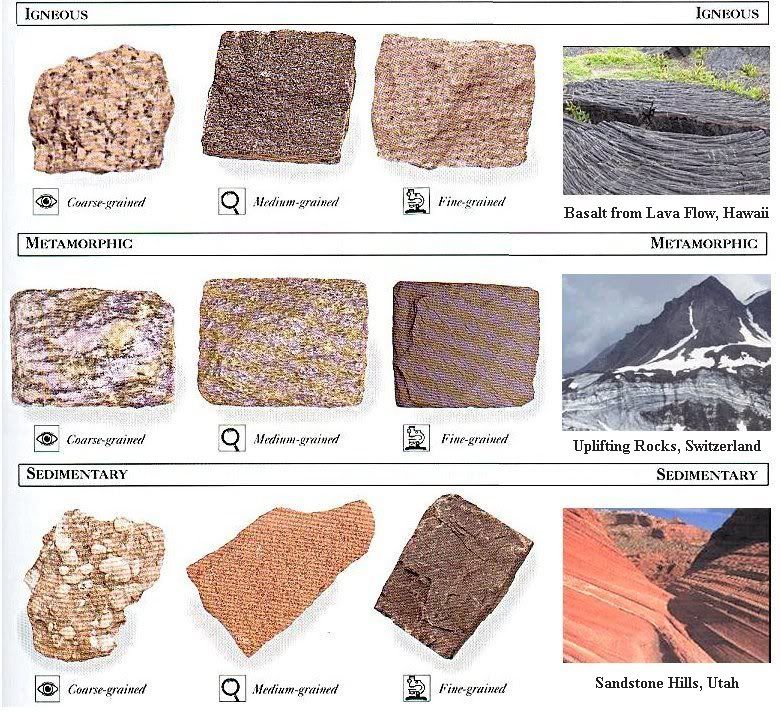
__________________
GEO to aise k sab tumhara ha,MARO to aisa jaise tmhara kuch bhi nhi. Maza deti han zindagi ki thokerin unko,jinhen NAAM-E-KHUDA le kar sanbhal janey ki adat ho. |
| The Following 6 Users Say Thank You to SYEDA SABAHAT For This Useful Post: | ||
ADORABLE22 (Saturday, May 14, 2011), azmatullah (Friday, August 05, 2011), candidguy (Friday, May 13, 2011), Lonely birdx (Wednesday, April 17, 2013), muhammad_essa (Sunday, May 15, 2011), syed zakir (Thursday, May 09, 2013) | ||
|
#4
|
||||
|
||||
|
@Syeda
The first post deals with the GEOLOGY, I guess.
__________________
Try not to become a man of success but a man of value. |
|
#5
|
||||
|
||||
|
aariz,your answer is in this reply.
Index Of First Post 1:-Earth`s origin,shape and size. 2:-rotation and revolution 3:-distribution of land nad water 4:-geological time scale. i hope this will solve your confusion.thanks for pointing out.
__________________
GEO to aise k sab tumhara ha,MARO to aisa jaise tmhara kuch bhi nhi. Maza deti han zindagi ki thokerin unko,jinhen NAAM-E-KHUDA le kar sanbhal janey ki adat ho. |
| The Following 3 Users Say Thank You to SYEDA SABAHAT For This Useful Post: | ||
naeem khan1 (Thursday, December 13, 2012), Nazma Chaudry (Monday, October 13, 2014), SYED KAUSAR ALI SHAH (Sunday, December 18, 2011) | ||
|
#6
|
||||
|
||||
|
CONTINENTAL DRIFT
The shapes of the continents suggest that they could be joined like pieces of a jigsaw puzzle. This observation led to the suggestion, made in 1924, that in the distant past there had been one super-continent (pangaea) that broke up, with the various sections drifting apart to form the present-day continents. This concept, called continental drift is supported by the theory of plate tectonics6 - a theory that offers a comprehensive explanation of the distribution of continents, mountain chains, volcanoes, earthquake sites, and ocean trenches. CSS Forums - View Single Post - Diagrams Related to Physical Geography PLATE TECTONIC THEORY Earth is the only planet that has plate tectonics. Models of the Earth have shown that the lithosphere (crust + mantle) is too thick for smaller planet, while the gravitational force for larger planet would squeeze any plates together. Even when the size criterion is met, it needs a way to crack the lithosphere. Numerous computer models fail to simulate conditions in which a break in the crust would spontaneously occur. It is suggested that perhaps asteroid or comet strikes may have led to the creation of the subduction process as shown in Figure 09-06b.  TYPES OF PLATES There are four types of plate boundaries as shown in Figure 09-06a: Divergent boundaries - where new crust is generated as the plates pull away from each other. In mid-ocean, this movement results in seafloor spreading and the formation of ocean ridges; on continents, crustal spreading can form rift valleys. Convergent boundaries - where crust is destroyed as one plate dives under another. In mid-ocean, this causes ocean trenches, seismic activity, and arcs of volcanic islands. Where oceanic crust is subducted beneath continental crust or when continents collide, land may be uplifted and mountains formed. Transform boundaries - where crust is neither produced nor destroyed as the plates slide horizontally past each other such as the San Andreas fault (Figure 09-06c). Such movement produces earthquakes. Plate boundary zones - broad belts in which boundaries are not well defined and the effects of plate interaction are unclear. Because plate-boundary zones involve at least two large plates and one or more micro-plates caught up between them, they tend to have complicated geological structures and earthquake patterns. The movement of the Earth is induced by the convection currents of molten magma deep down in a zone called the mantle. These currents rise, then turn sideways below the solid crust. The crust is divided into nine major plates in the lithosphere (Figure 09-06e, the 9th one is uncertain). Slowly, at rates of a few centimeters per year, the rising current moves these plates. If the plate moves over a localized hot spot (Figures 09-06a and c) in the mantle, volcano will form until the plate carries it away from this source of magma.  http:// 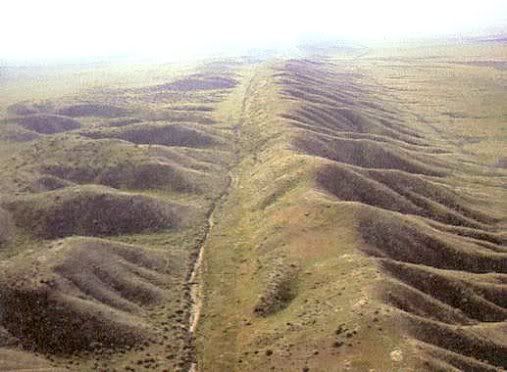 sanandreas fault For example, the Hawaiian group of volcanic islands, which lie in the middle of the Pacific plate, has been built up while the plate has been drifting over a hot spot (Figure 09-06c). But volcanoes occur most commonly along the boundaries of crustal plates (Figure 09-06f). Crustal movement on continents may result in earthquakes, while movement under the sea bed can lead to tidal waves (tsunami).
__________________
GEO to aise k sab tumhara ha,MARO to aisa jaise tmhara kuch bhi nhi. Maza deti han zindagi ki thokerin unko,jinhen NAAM-E-KHUDA le kar sanbhal janey ki adat ho. |
| The Following 6 Users Say Thank You to SYEDA SABAHAT For This Useful Post: | ||
aariz (Sunday, May 15, 2011), azmatullah (Friday, August 05, 2011), candidguy (Sunday, May 15, 2011), hamza786 (Friday, August 30, 2013), Lonely birdx (Wednesday, April 17, 2013), vanpersie (Tuesday, May 06, 2014) | ||
|
#7
|
||||
|
||||
|
@Sabahat. Whats the resource of this material?
Regards
__________________
Try not to become a man of success but a man of value. |
|
#8
|
||||
|
||||
|
aariz i think you are a mind reader
 .i was thinking that i miss the source part. .i was thinking that i miss the source part. source of above mentioned notes is 1:-google searchsite for geomorphology 2:-earth science section of moorland school 3:-a great website of universe,structure,evolution,observation and theories. 4:-website of lancester university uk. many more site i cant remember right now.but i ensure you that all the material is authentic and upto date. any other query about notes or anything you wanto ask.i am always here. plz guys give me your sugesstions how to make these notes much better.
__________________
GEO to aise k sab tumhara ha,MARO to aisa jaise tmhara kuch bhi nhi. Maza deti han zindagi ki thokerin unko,jinhen NAAM-E-KHUDA le kar sanbhal janey ki adat ho. |
| The Following 4 Users Say Thank You to SYEDA SABAHAT For This Useful Post: | ||
azmatullah (Friday, August 05, 2011), Fahaf (Tuesday, August 26, 2014), Lonely birdx (Wednesday, April 17, 2013), naeem khan1 (Thursday, December 13, 2012) | ||
|
#9
|
||||
|
||||
|
The Ideal Stream Cycle (W.M. Davis, 1880)
1:-Youth 2:-Maturity 3:-Old Age 4:-Rejuvenation Youth 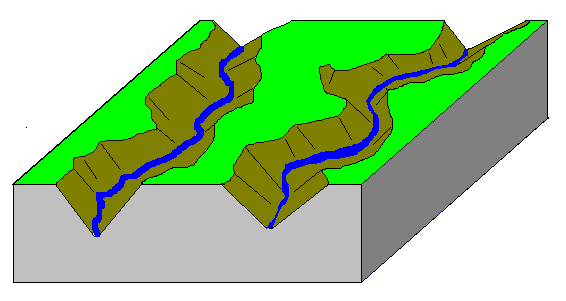 [B]*V-Shaped Valley *Rapids *Waterfalls *No Flood Plain Drainage Divides Broad and Flat, Undissected by Erosion *Valley Being Deepened *General Agreement on this stage, lots of examples [/B MATURITY(EARLY) 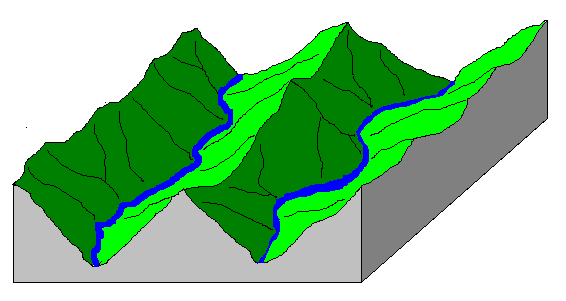 V-Shaped Valley Beginnings of Flood Plain Sand and Gravel Bars Sharp Divides Relief Reaches Maximum Valleys stop deepening General Agreement on this stage, lots of examples MATURITY(LATE) 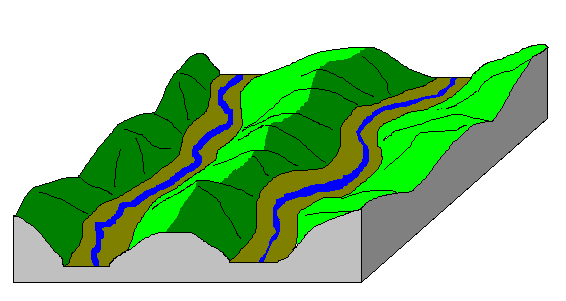 Valley has flat bottom Narrow Flood Plain Divides begin to round off Relief diminishes Sediment builds up, flood plain widens River begins to meander Lots of Disagreement from here on; some geologists believe slopes stay steep but simply retreat. OLD AGE 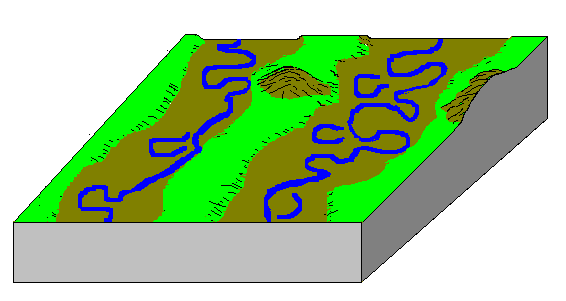 Very Wide Flood Plain Land worn down to flat surface (Peneplain) Resistant rocks form residual hills (Monadnocks) Pronounced River Meanders Cut-off Meanders (Ox-bow lakes)
__________________
GEO to aise k sab tumhara ha,MARO to aisa jaise tmhara kuch bhi nhi. Maza deti han zindagi ki thokerin unko,jinhen NAAM-E-KHUDA le kar sanbhal janey ki adat ho. |
| The Following 7 Users Say Thank You to SYEDA SABAHAT For This Useful Post: | ||
Bazgha Saleem Khan (Tuesday, December 27, 2011), candidguy (Tuesday, May 17, 2011), naeem khan1 (Thursday, December 13, 2012), pari (Saturday, August 04, 2012), sarmad kazi (Friday, October 05, 2012), Shikva (Tuesday, May 17, 2011), Syed Rehmat ullah shah (Tuesday, January 08, 2013) | ||
|
#10
|
|||
|
|||
|
@syeda
i don't have geography back ground ,,should i go for it ,ur guidance??? |
| The Following 2 Users Say Thank You to Do the Due For This Useful Post: | ||
naeem khan1 (Thursday, December 13, 2012), vanpersie (Tuesday, May 06, 2014) | ||
 |
| Tags |
| physical geo.notes |
«
Previous Thread
|
Next Thread
»
| Thread Tools | Search this Thread |
|
|
 Similar Threads
Similar Threads
|
||||
| Thread | Thread Starter | Forum | Replies | Last Post |
| Essay Tips | Argus | Essay | 82 | Monday, December 12, 2022 11:36 PM |
| Paragraph Writing | Omer | Expansion/Paragraph | 1 | Sunday, January 11, 2009 01:55 PM |
| Guide to Essay Writing | Shaukat Munir | Essay | 0 | Wednesday, November 28, 2007 05:43 PM |
| Geography an overview | Naseer Ahmed Chandio | Geography | 9 | Wednesday, August 29, 2007 03:06 PM |
| Essays on Essay Writing | atifch | Essay | 6 | Friday, December 22, 2006 11:24 PM |













